Sambal Matah
This post shares a full recipe from my recently published book that offers you a passport for you senses to explore the vibrant culture of Bali
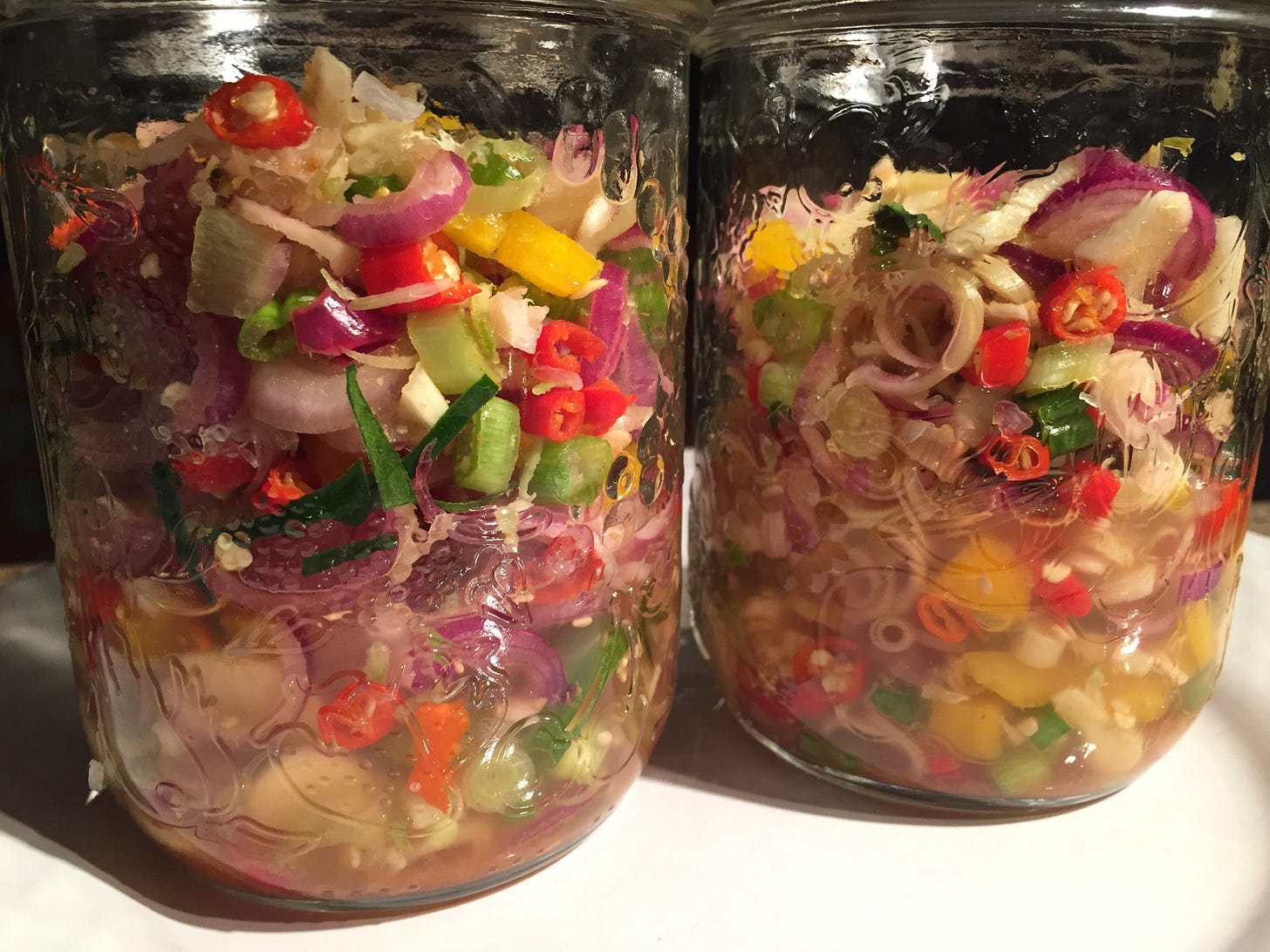
In an effort to find unique ways to enjoy and preserve our own home-grown limes I found an interesting Balinese recipe that I adapted so we could put every bit of our beautiful homegrown limes to good use (peel, pith, leaves, juice and pulp). I combined that with some other favorite ingredients (hot peppers, Egyptian Walking Onions/shallots lemongrass, kaffir lime leaves etc) and created our own interpretation of an exuberant and delightful Balinese condiment called Sambal Matah.
I will share two different variations below. One fresh (the traditional way but with non-traditional ingredients). That version is super fun and refreshing.. its floral, tangy and playful and is fantastic on rice. Another version is fermented (which allows you to preserve the goodness for the long haul, add an extra tang and create a mind-blowing probiotic brine for flavoring dishes in the months to come.)
It is really hard to put the flavor into words... it is soft and inviting, progressing to sassy and complex. The aromas that fill the kitchen when simmering the lemon grass, chilis, lime leaves, garlic and shallots is out of this world.
Ingredients:
- 5-10 bird's eye chilies (or other homegrown hot peppers) chopped finely
(depending on heat preference)
- 1 sweet bell pepper, chopped finely
- 8 shallots (or Egyptian Walking Onion bulbs) sliced thinly
or use one large purple/red onion
- 2 cloves garlic minced
- 2 kaffir lime leaves sliced thinly
- 1 tbsp lime juice
- salt for brine
- 1/4 tsp sugar (I prefer coconut or maple sugar)
- 1 lemongrass, tender white inner bulb only sliced thinly
- 3 tbsp coconut oil (omit or add very little in the fermented version)
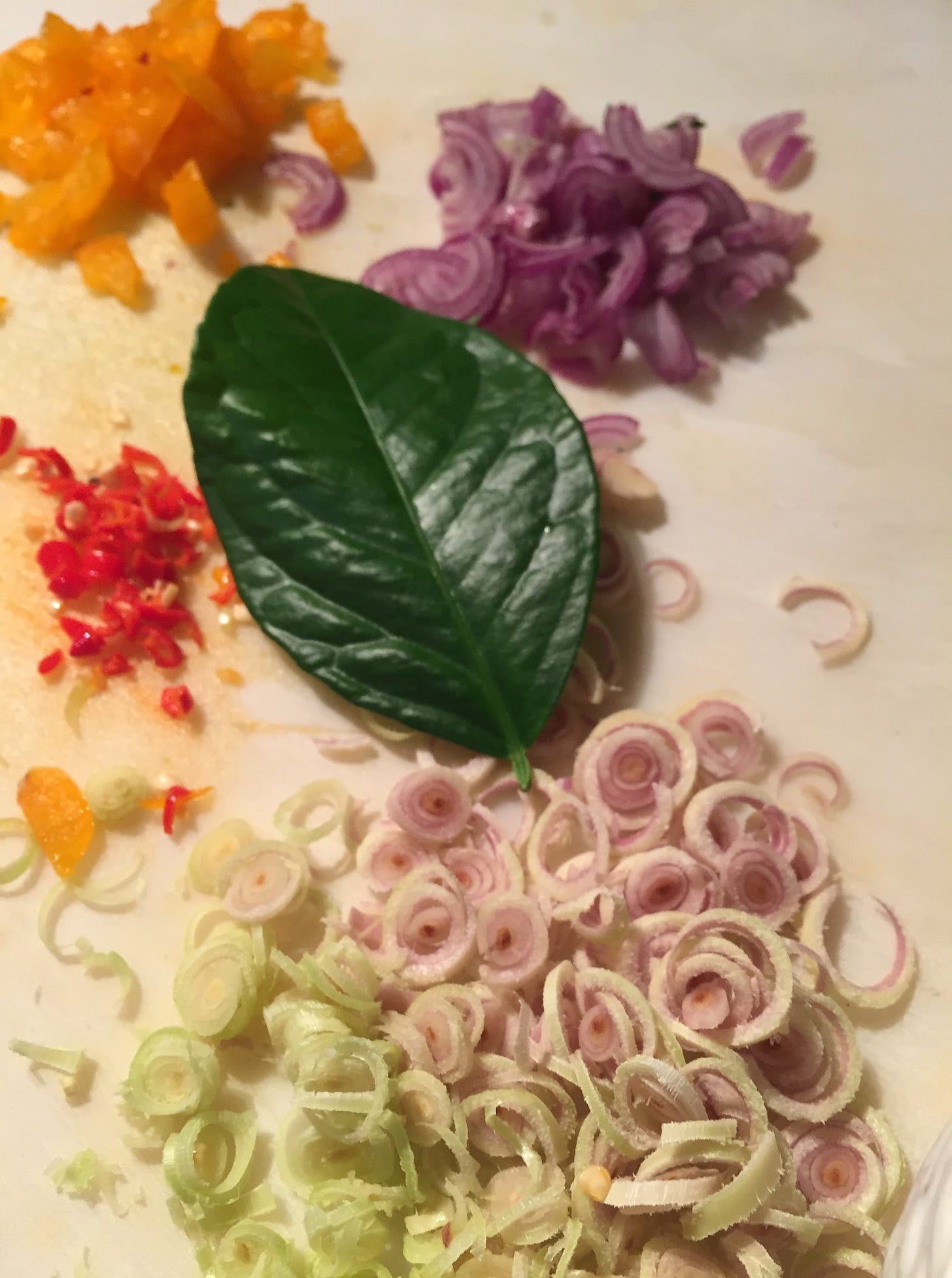
Preparation for the fresh version:
In a medium bowl, combine bird' eye chilies, bell pepper, shallots, garlic, kaffir lime leaves, lime juice, salt, and sugar until well incorporated. Set aside.
Heat coconut oil in a small frying pan over low heat. After the oil is heated add half the shallots/onions, half the bell pepper and the lemongrass, cook until fragrant.
Turn off the heat. Pour the hot oil mixture into the chilies mixture. Stir and press slightly to combine.
Serve and store the leftover in an airtight container for up to one week.
Another variation that is fun is omitting the coconut oil and cooking and just enjoying this Sambal Matah 100% raw. If doing that version only using the tender core of the lemongrass stalk and slicing very thinly is important.
Preparation for the fermented version:
Combine all the ingredients in a large bowl. Mix well.
Create a salt brine by adding 1 and ½ tsp of sea salt per 250ml of filtered water and stirring until dissolved (you will need enough to submerge your Sambal Matah ingredients).
Add these ingredients to a mason jar (or other fermenting vessel) leaving about one inch of headroom at the top for expansion during fermentation).
Weigh the ingredients down with a fermentation weight (I also find using a thick slice of onion as a “fermentation cap” to hole all the smaller sliced ingredients in the brine helps) and then add sea salt brine until all the ingredients and the weight are fully submerged.
Allow this jar to sit and ferment at room temperature for at least one week (checking daily to briefly loosen the lid to allow build-up CO-2 to escape if using a mason jar with a screw-top lid or other tightly fitting lid).
Start tasting daily after seven days and when you really like the flavor, put it in the refrigerator to slow the fermentation process and store for up to 6 months.
After fermenting Sambal Matah the flavors marry seamlessly to become a tangy, warming (but not hot), floral and fruity elixir that is very inviting and stimulating to the senses. It is really an amazing 'explosion of flavor' whether fresh or fermented but after fermenting the progression of this bright and exuberant sensory experience is more well-rounded with the distinct tropical flavors complementing each other seamlessly. The smell is like if you were to combine a refreshing tangy notes of lime with the fragrance of a tropical flower with a background of rich garlicy-ness. Both can be used on rice, for making salad dressings, adding to hot sauces and stir-fries for an extra burst of flavor and nutrition.
The recipe for Sambal Matah above is from my recently published book (cover shown in image below).

For those interested in purchasing a physical copy of the book you can do so through this link:
https://recipesforreciprocity.com/shop/softcover/



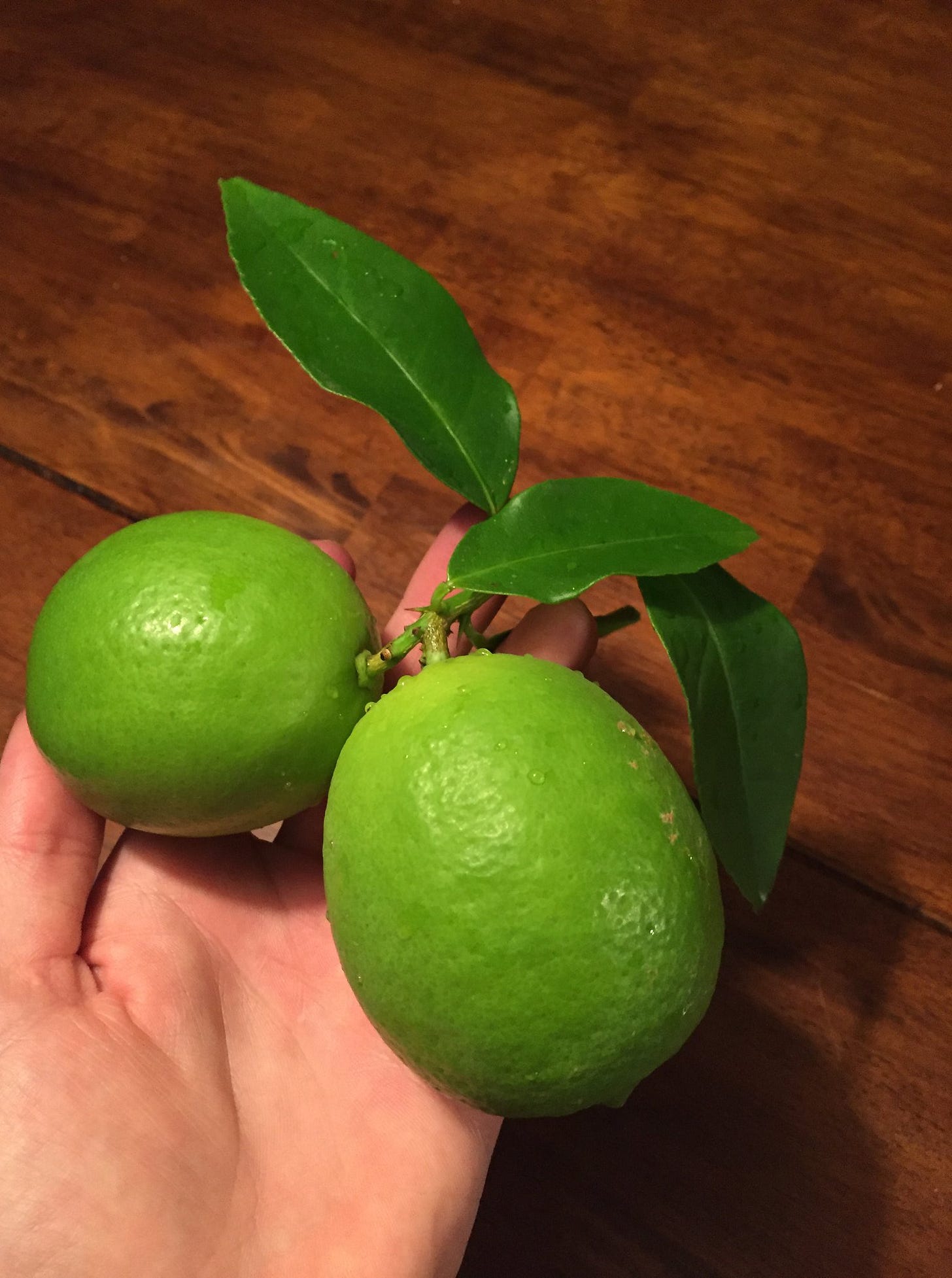
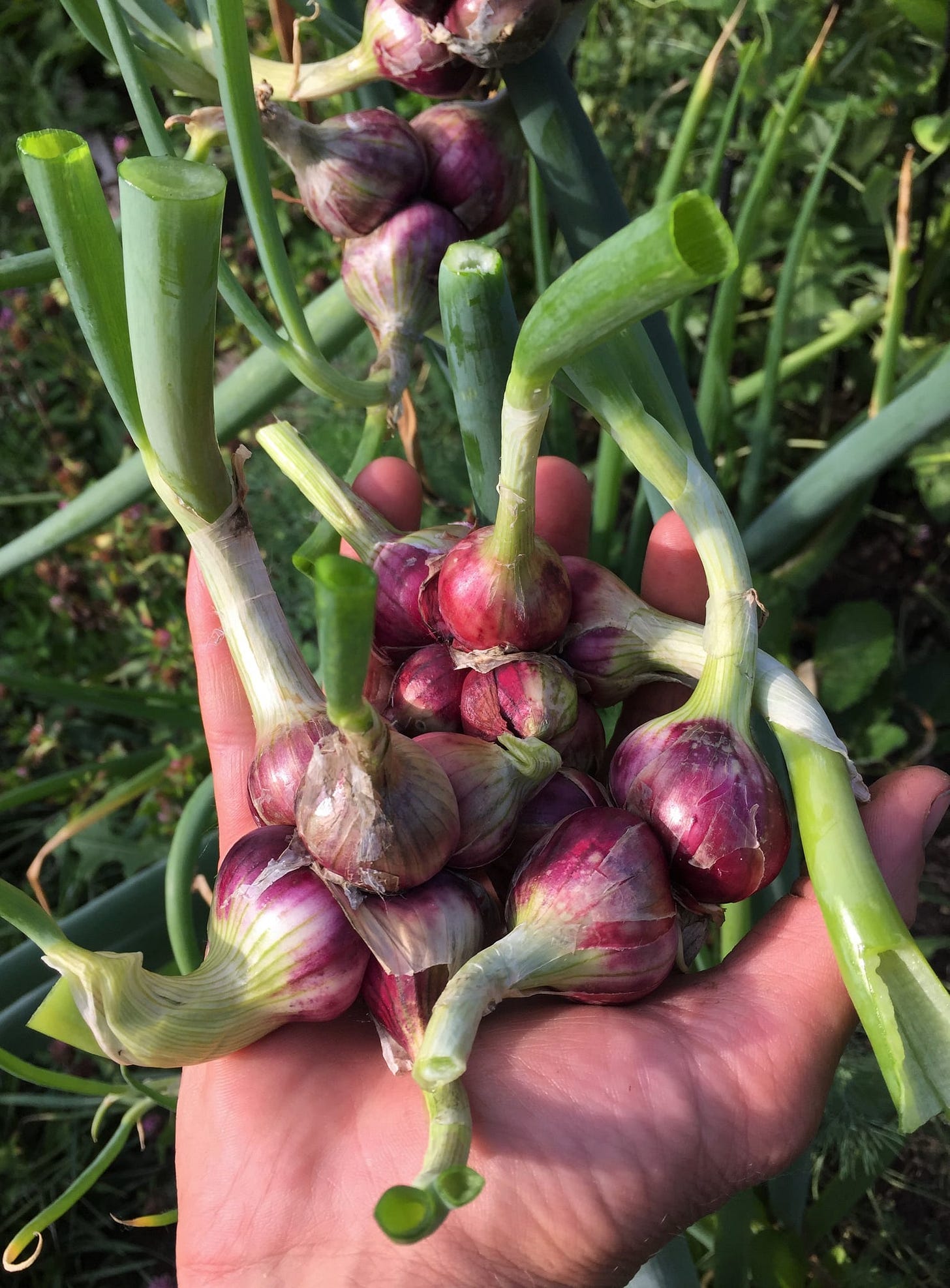
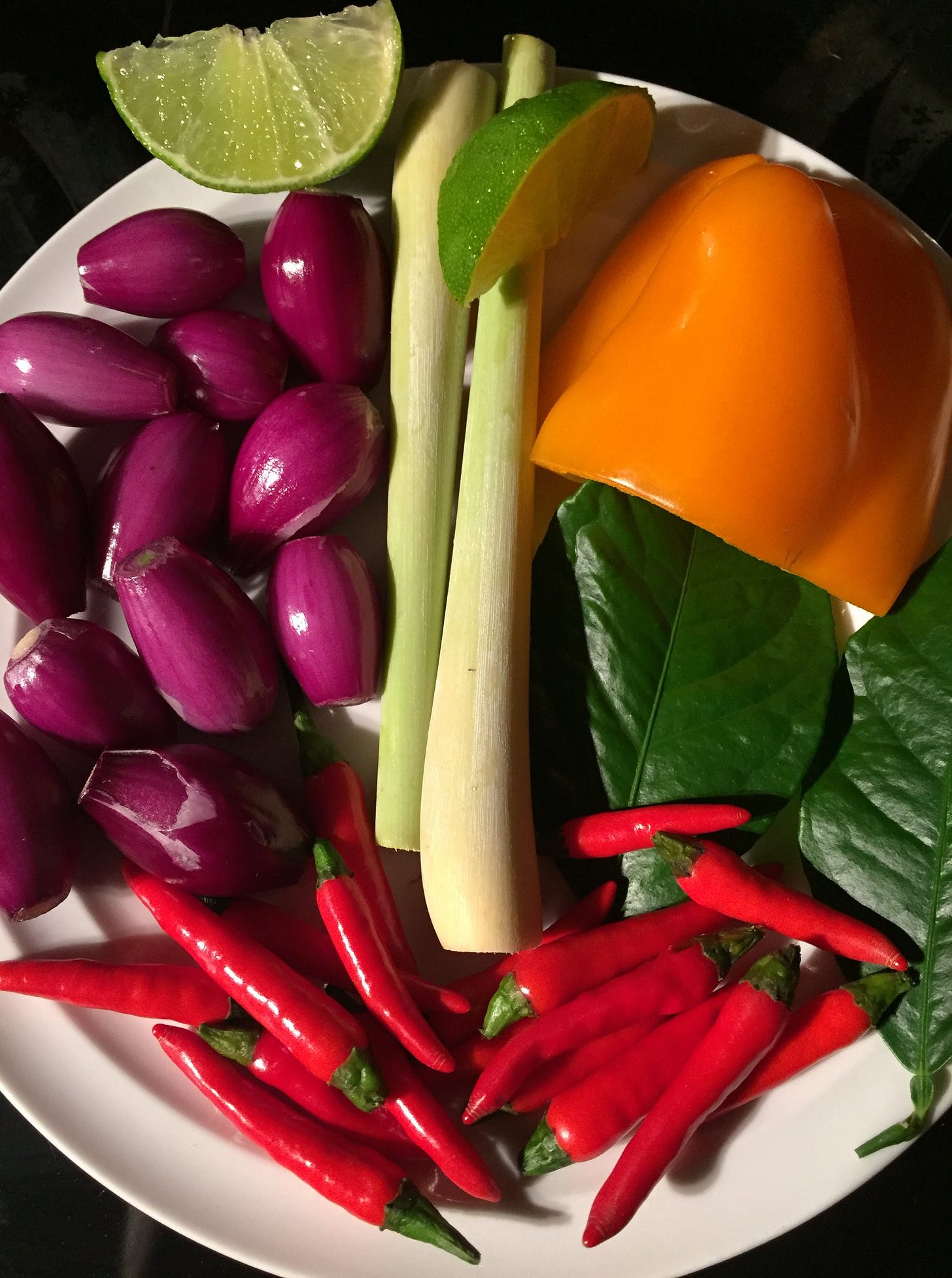
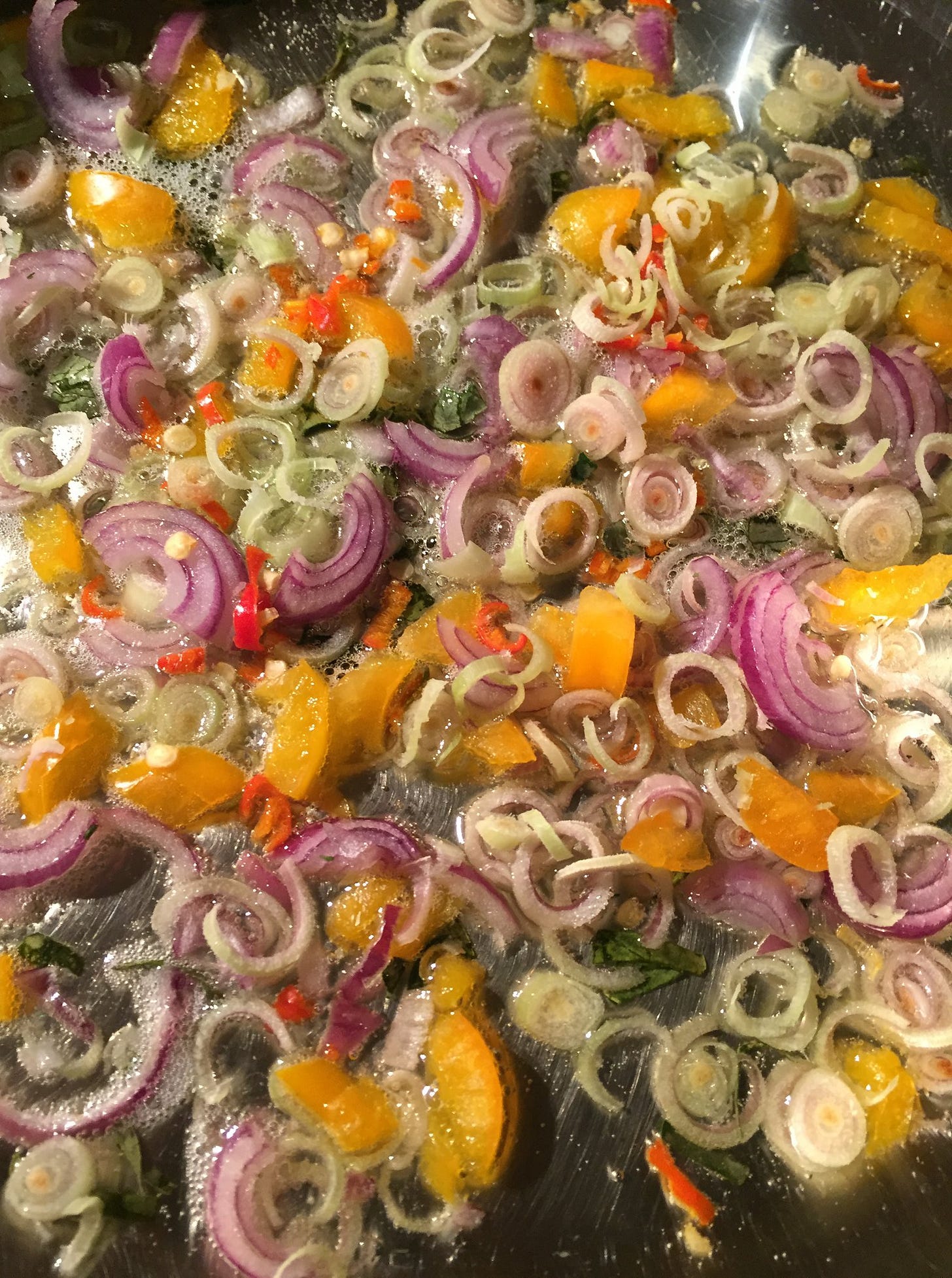
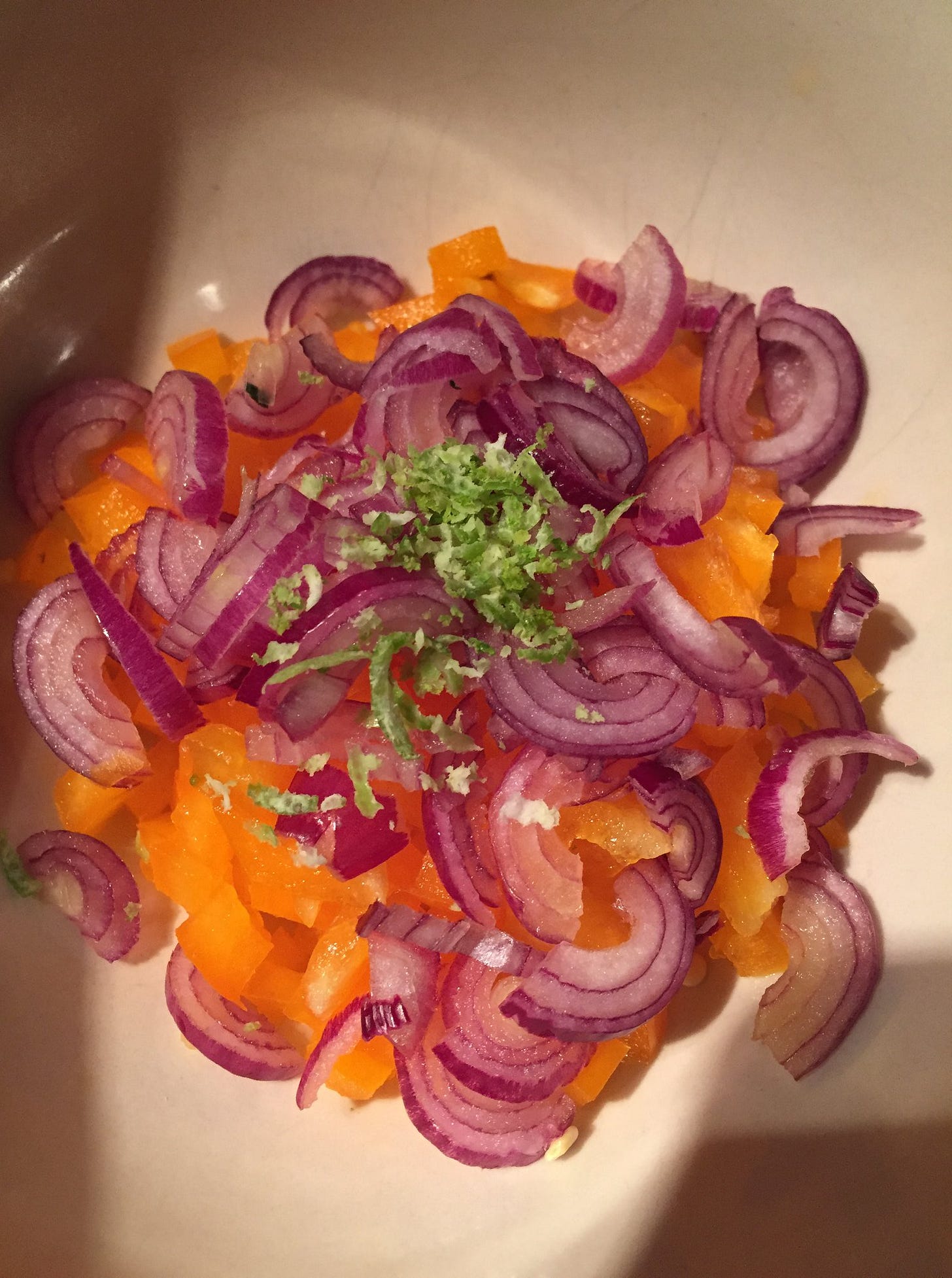
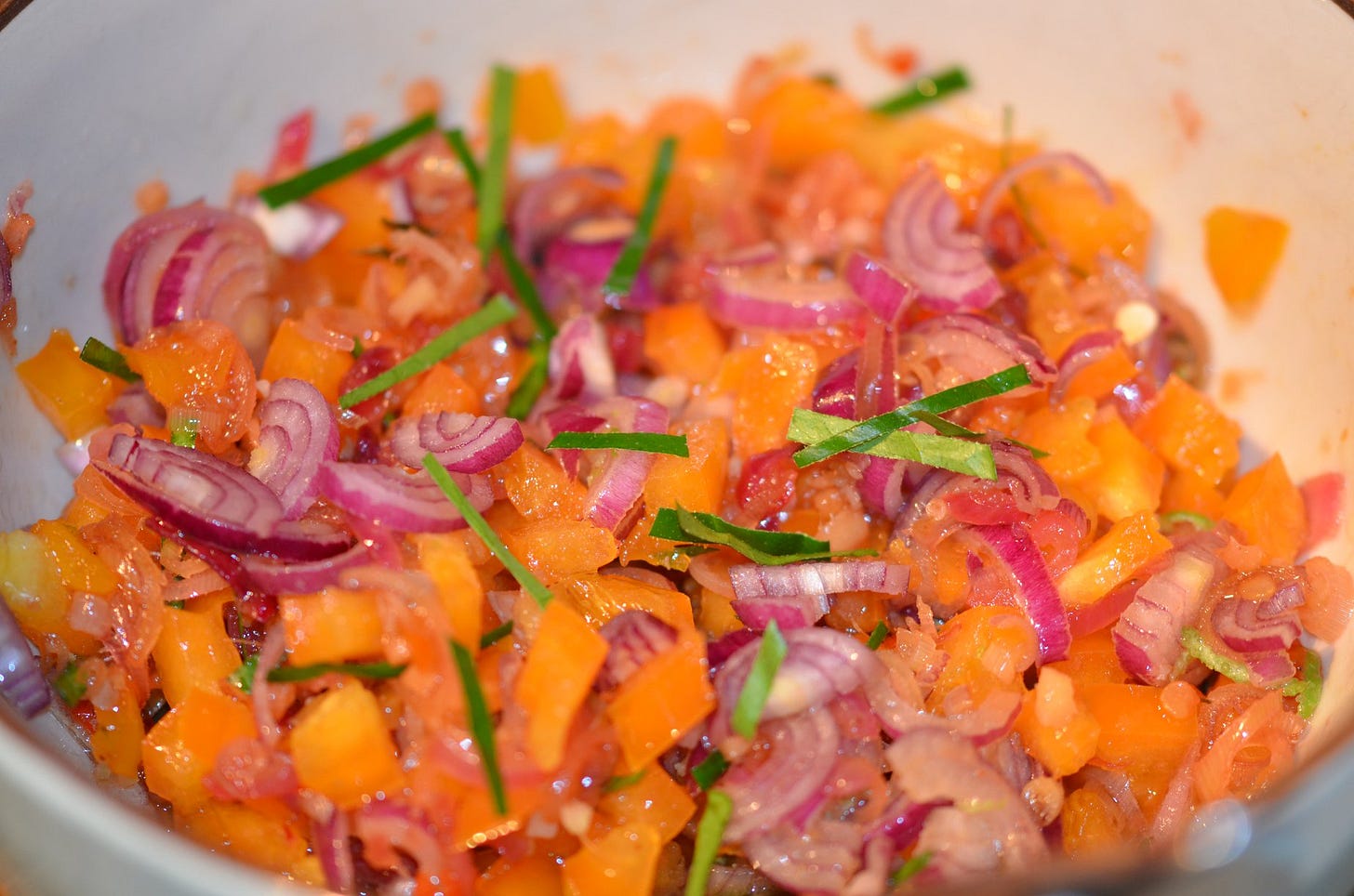
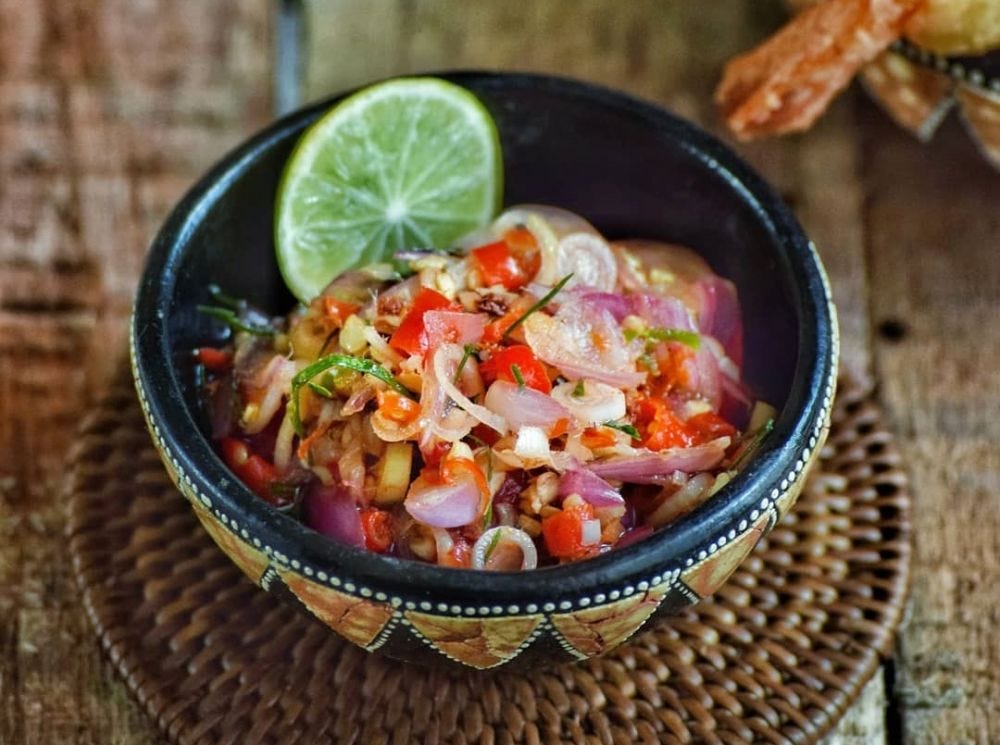
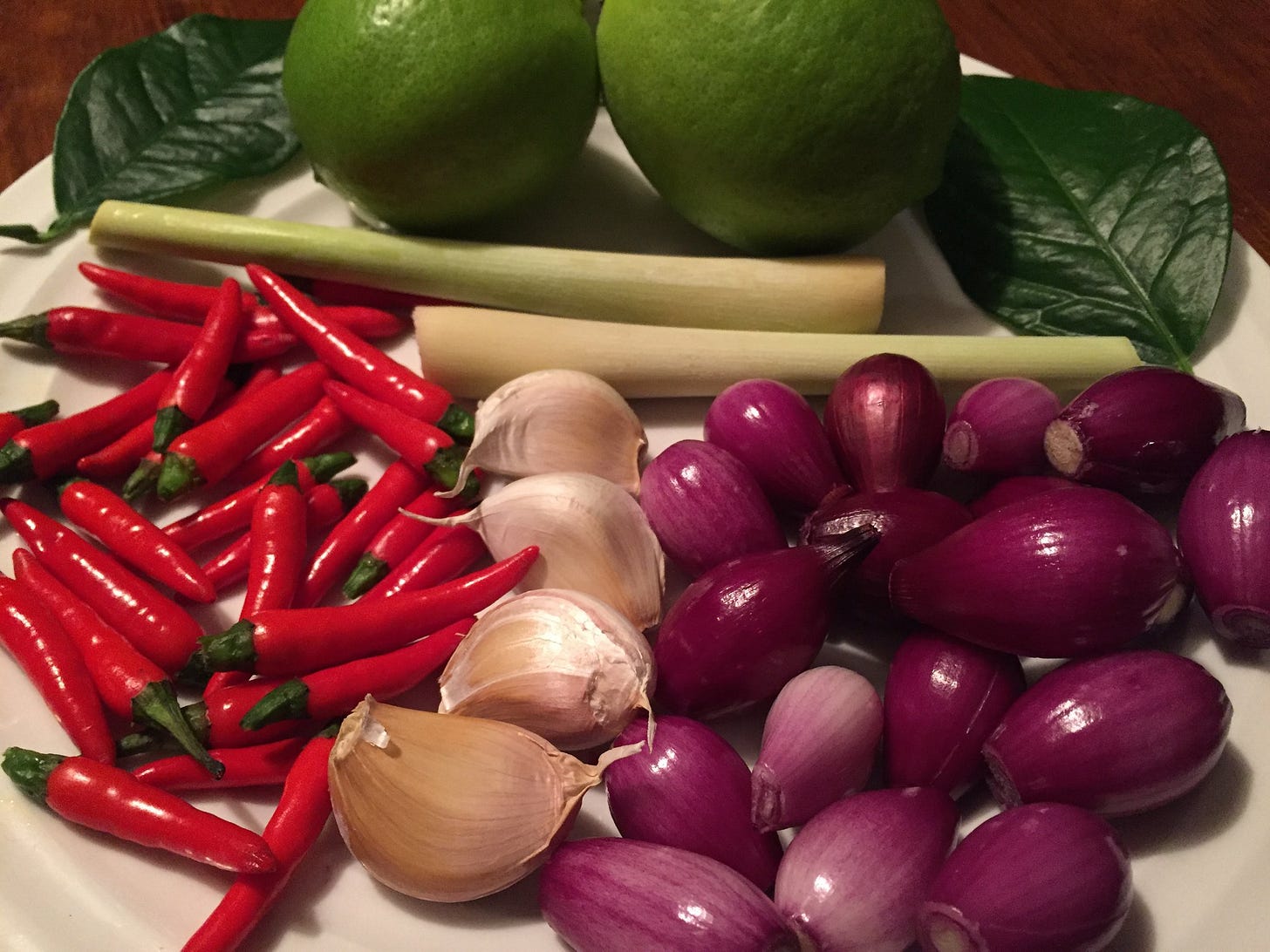
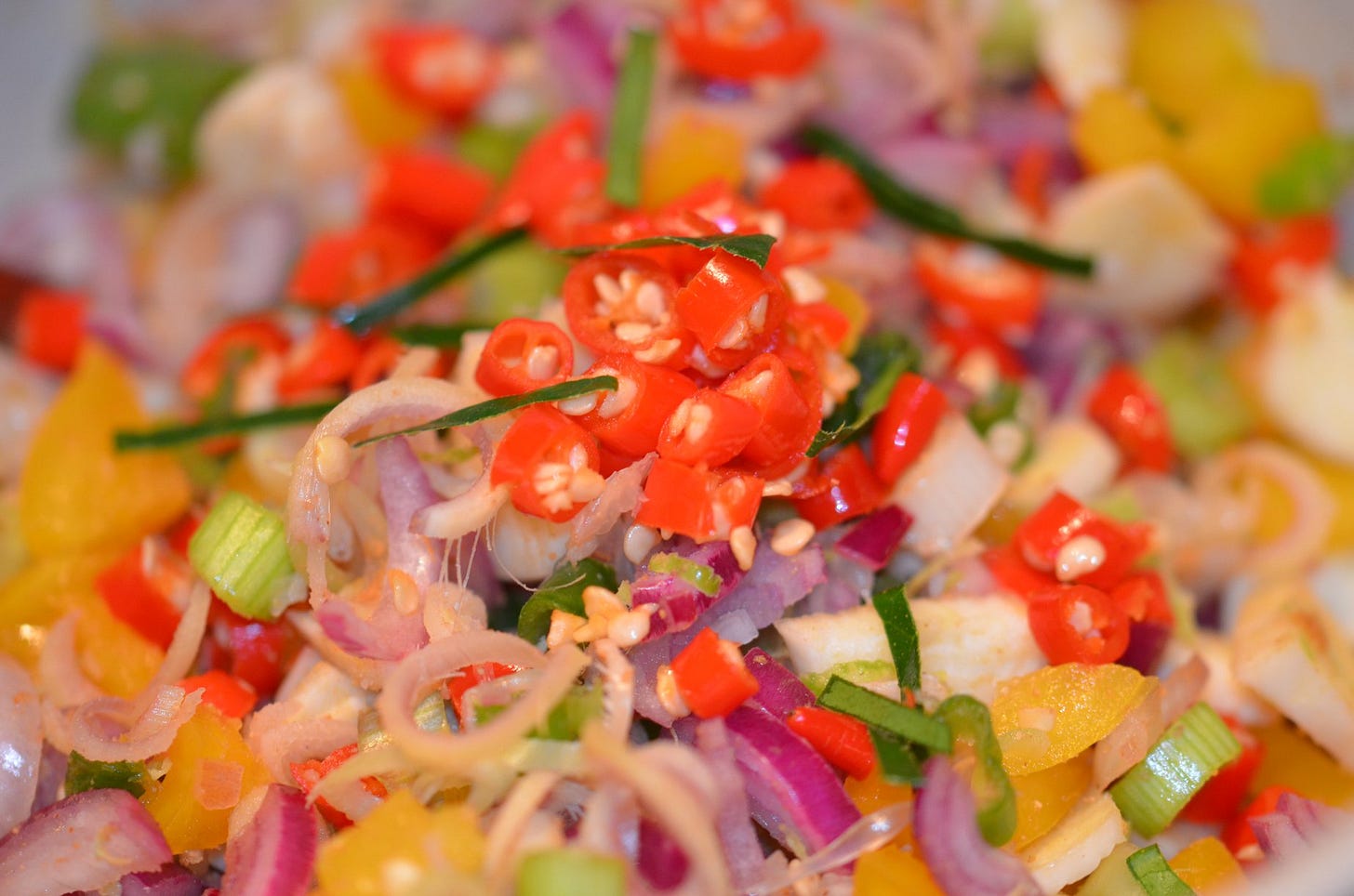
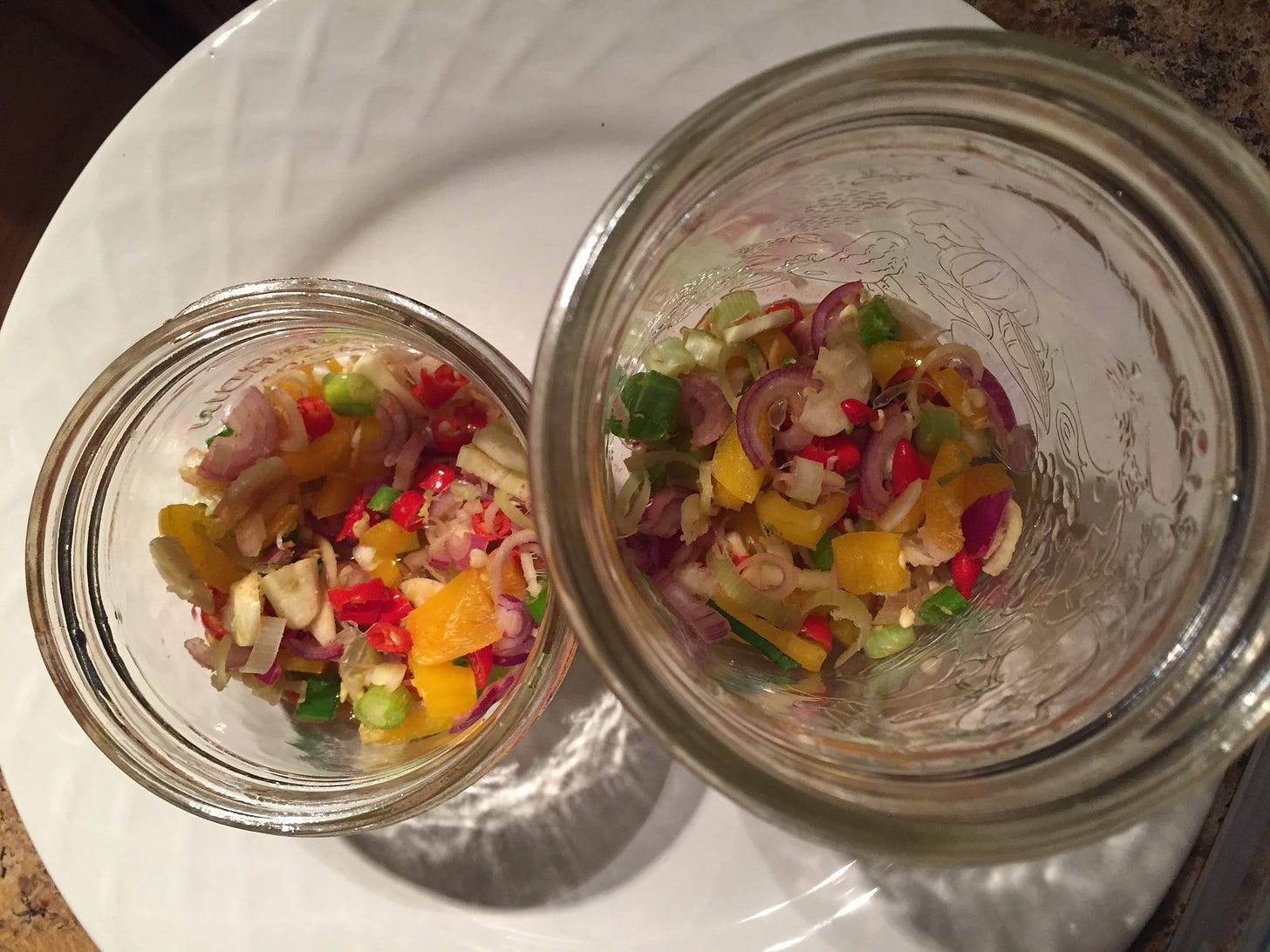
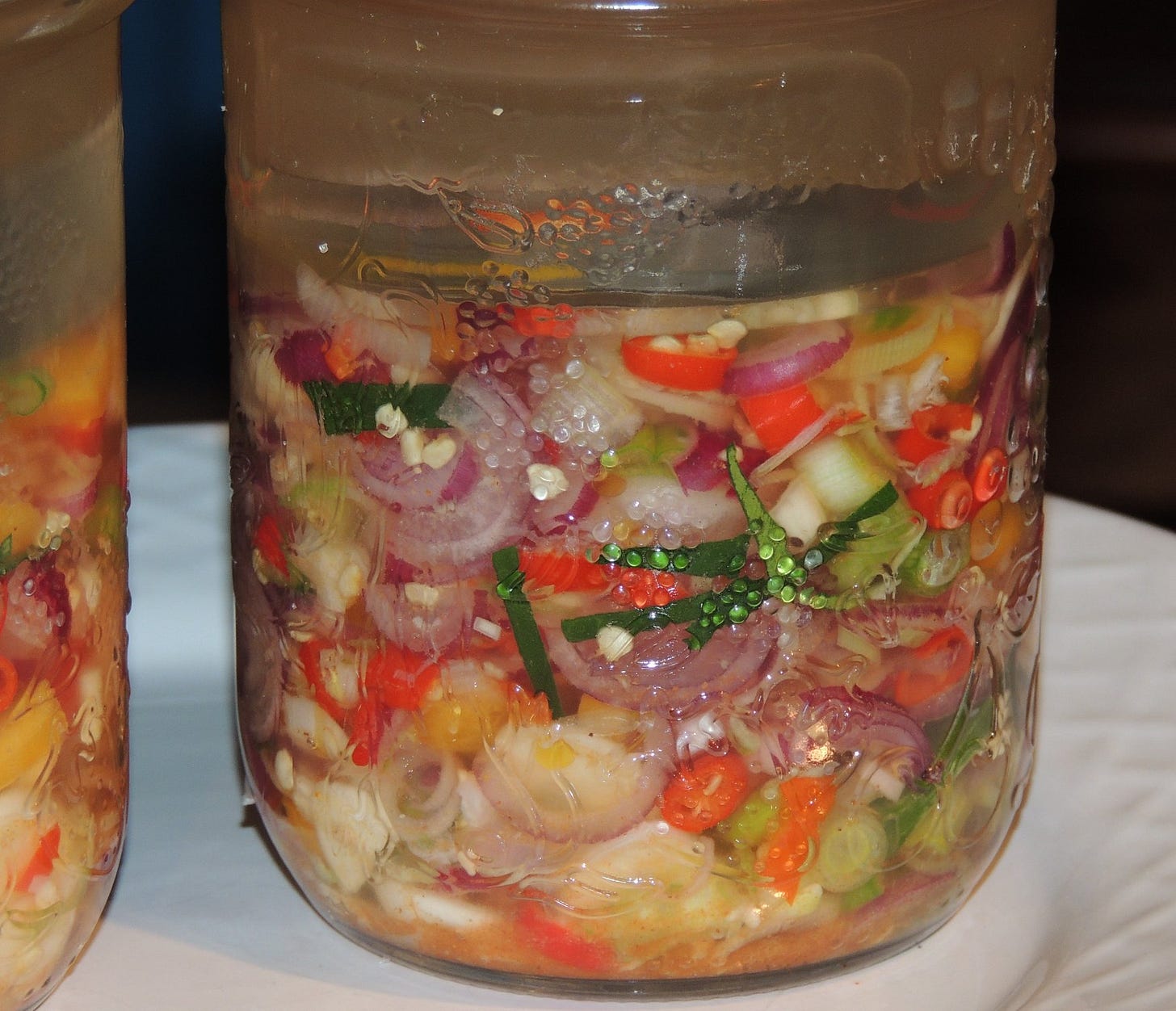
Looks beautiful and sounds delish! I haven’t tried a ferment yet that has cooked ingredients, didn’t know that was a thing—thanks for the new inspiration.
You’re making my mouth water!